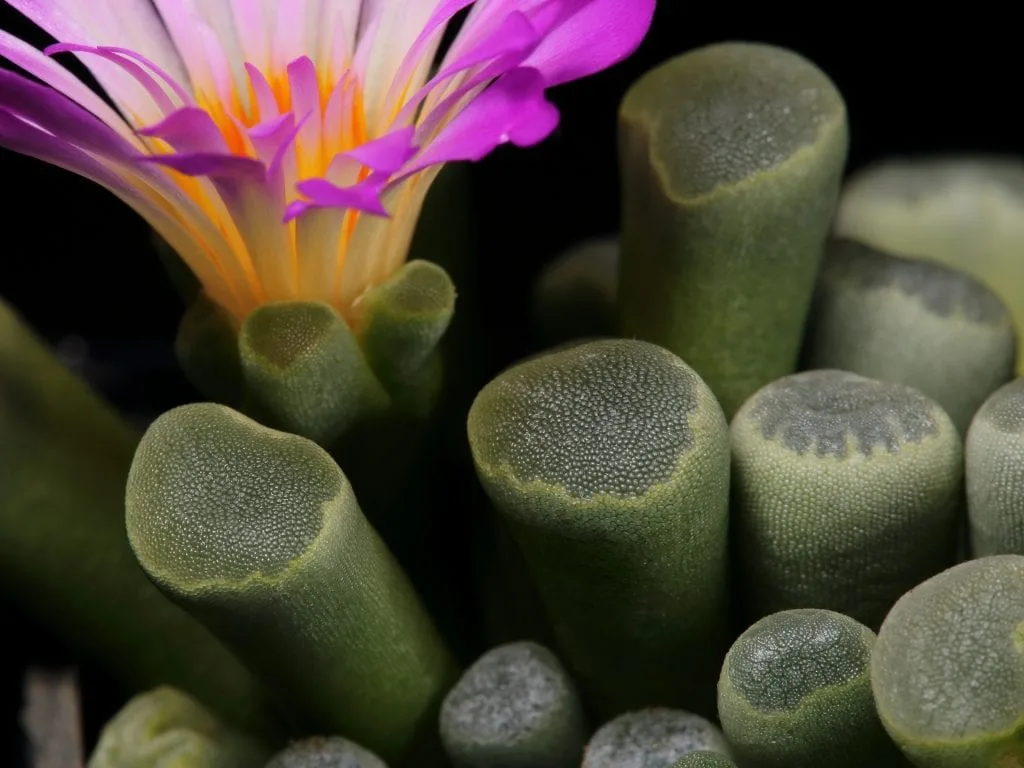table of contents
Introduction
Succulents have earned a special place in the hearts of plant lovers due to their beauty and ease of care. These plants, known for storing water in their fleshy leaves, are popular in gardens and indoor decorations. However, among the vast variety of succulents, some stand out as true gems of nature. In this article, we’ll explore the fascinating world of rare succulents, presenting the 5 most extraordinary species that delight collectors and enthusiasts all over the world. Get ready to meet these botanical wonders that are true gems of nature!
Succulent 1: Haworthia Cooperi Var. Truncata
Haworthia Cooperi Var. Truncata is a unique succulent native to the arid regions of South Africa. It is characterized by its triangular, truncated leaves, giving it a unique appearance among succulents. This particular variety stands out for the pattern of transparent windows in the leaves, allowing light to enter in a unique way.
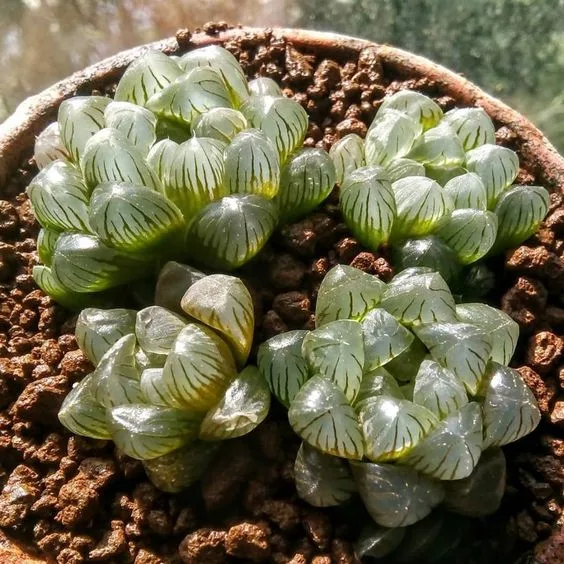
Distinctive features:
- Origin: South Africa.
- Truncated Leaves: Triangular and truncated leaves, creating a striking aesthetic.
- Window pattern: Transparent windows in the leaves that allow light to pass through.
Specific Care:
- Suitable Light: Prefers bright indirect light.
- Well-drained soil: Requires specific soil for succulents.
- Moderate Watering: Avoid excess moisture, water only when the soil is dry.
- Mild Temperature: Adapted to warmer environments, but can tolerate cooler temperatures.
When growing Haworthia Cooperi Var. Truncata, this specific care guarantees healthy flowering and the preservation of its unique characteristics.
Succulent 2: Lithops Weberi
Lithops Weberi, known as “living stones” or “stone fingers”, is a succulent notable for its resemblance to small stones. Originally from the desert regions of South Africa, this plant has peculiar characteristics that make it one of the rarest and most fascinating succulents.
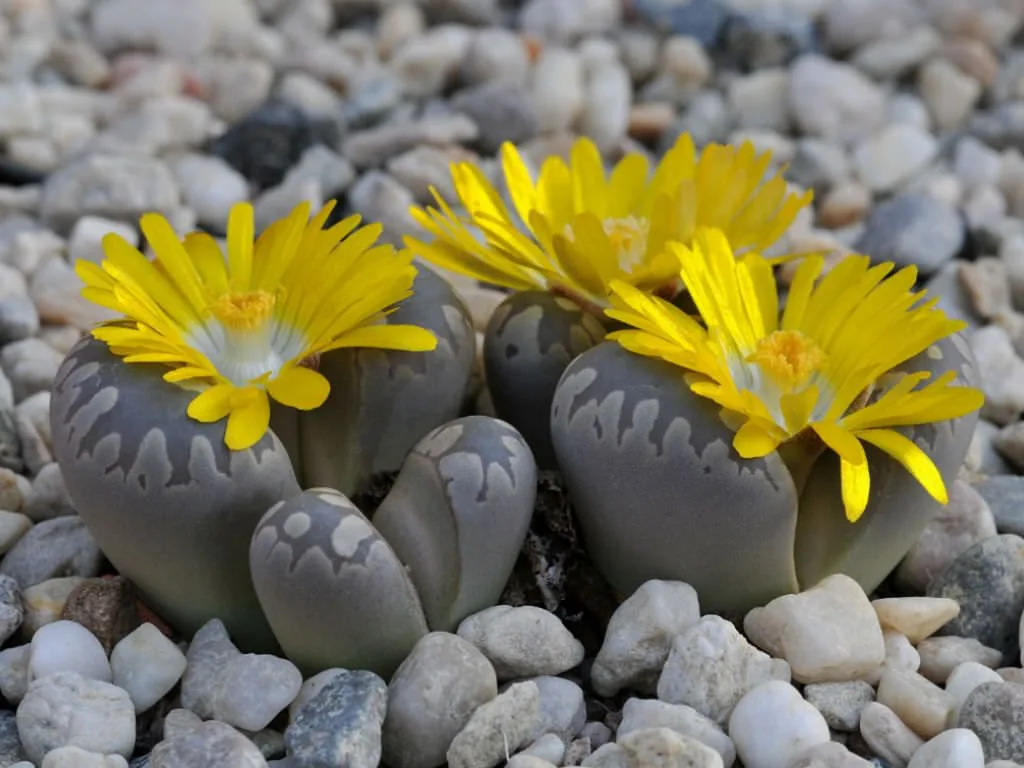
Peculiarities of Lithops Weberi:
- Stone mimicry: Its leaves mimic stones, providing natural camouflage.
- Daedalus shape: The leaves grow in pairs, forming unique patterns.
- Varied Colors: It has a variety of shades, from green to grayish tones.
Successful cultivation:
- Porous Soil: Requires extremely well-drained soil.
- Direct sunlight: Prefers direct sunlight.
- Moderate Watering: Avoid overwatering, watering only when the soil is dry.
- Protection from strong sun: In hot climates, shade during the most intense hours of the sun.
By adopting these growing suggestions, succulent lovers can appreciate the unique beauty of Lithops Weberi in its most exuberant form.
Succulent 3: Pachypodium Horombense
Pachypodium Hor ombense is a fascinating succulent, known for its sculptural shape and origin in the regions of Madagascar. Its intriguing history and unique characteristics make it one of the rarest and most desired succulents by collectors.
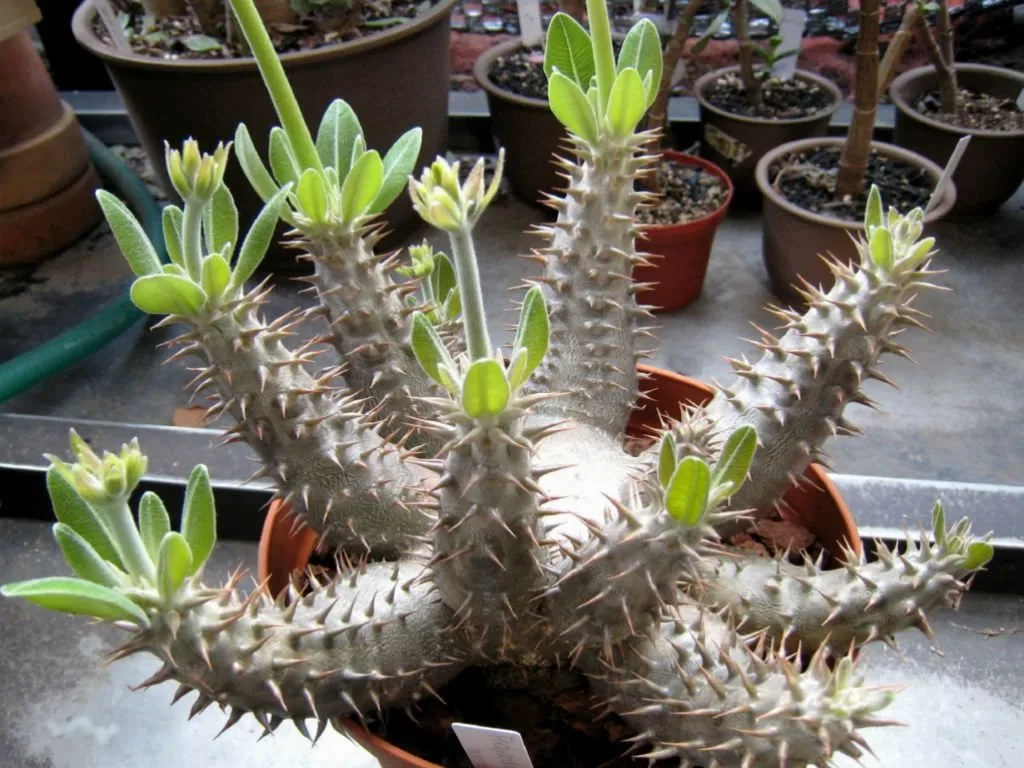
History and Curiosities:
- Origin Madagascar: Native to the semi-arid regions of Madagascar.
- Dwarf Baobab Shape: It has a thick, swollen trunk, resembling a miniature baobab.
- Attractive Flowers: Produces tubular flowers in vibrant shades.
Cultivation recommendations:
- SandySoil: Prefers well-drained, sandy soil.
- Sun Exposure: Needs direct sunlight for healthy growth.
- Moderate Watering: Avoid overwatering; allow the soil to dry out between waterings.
- Cold Protection: Sensitive to cold temperatures; frost protection.
Growing Pachypodium Horombense provides not only an exotic addition to the collection, but also an opportunity to appreciate a truly unique succulent.
Succulent 4: Adromischus Cristatus
Adromischus Cristatus, also known as “Old Man’s Cristata”, is a rare and intriguing succulent, prized for its unique characteristics and undulating shape. Learn more about this botanical gem and how to care for it properly.
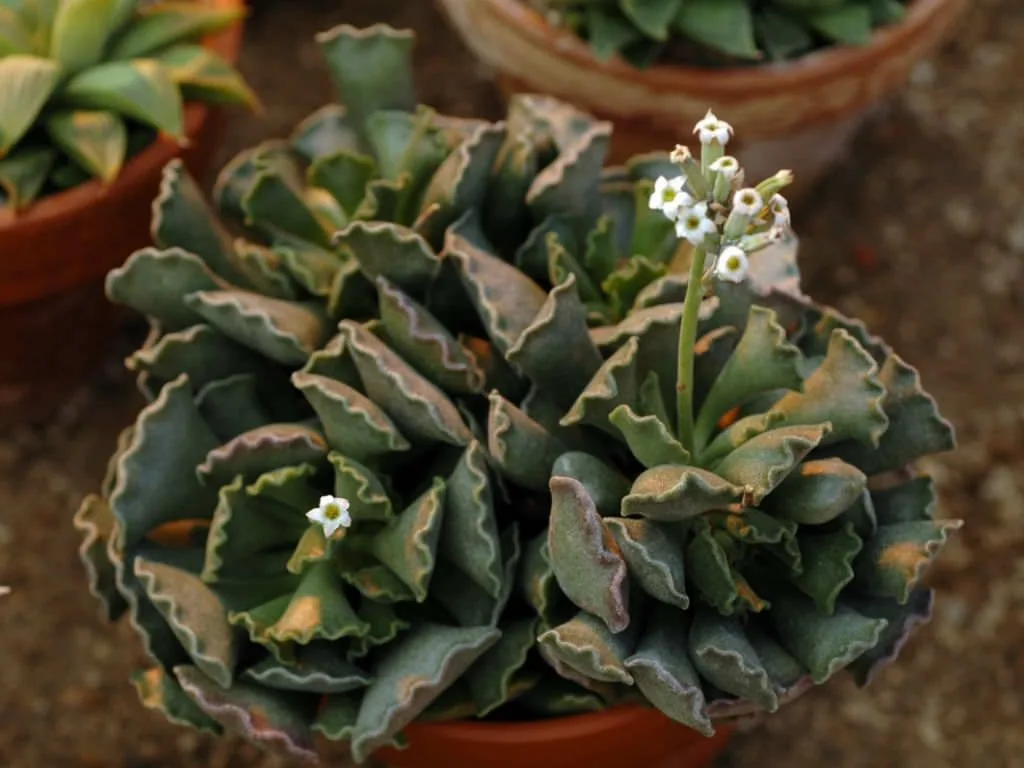
Notable Characteristics:
- Cristata shape: It has a cristata shape, with wavy, stacked leaves.
- Velvet texture: Leaves covered in a velvety texture, giving it a charming look.
- Attractive Colors: Varies from shades of green to red, depending on growing conditions.
Practical Care Guide:
- Well-drained soil: Use a substrate that allows good drainage.
- Indirect Light: Prefer bright indirect light; avoid intense direct sun.
- Moderate Watering: Avoid waterlogging; water when the soil is dry.
- Mild Temperatures: Protect from extreme temperatures.
By growing Adromischus Cristatus, succulent enthusiasts will enjoy not only its unique beauty, but also the satisfaction of caring for a truly rare species.
Succulent 5: Frithia Pulchra
The Frithia Pulchra, known as the “Frithia Window”, stands out among succulents for its unique appearance and distinctive care requirements. Find out more about this rare beauty and how to provide successful cultivation.
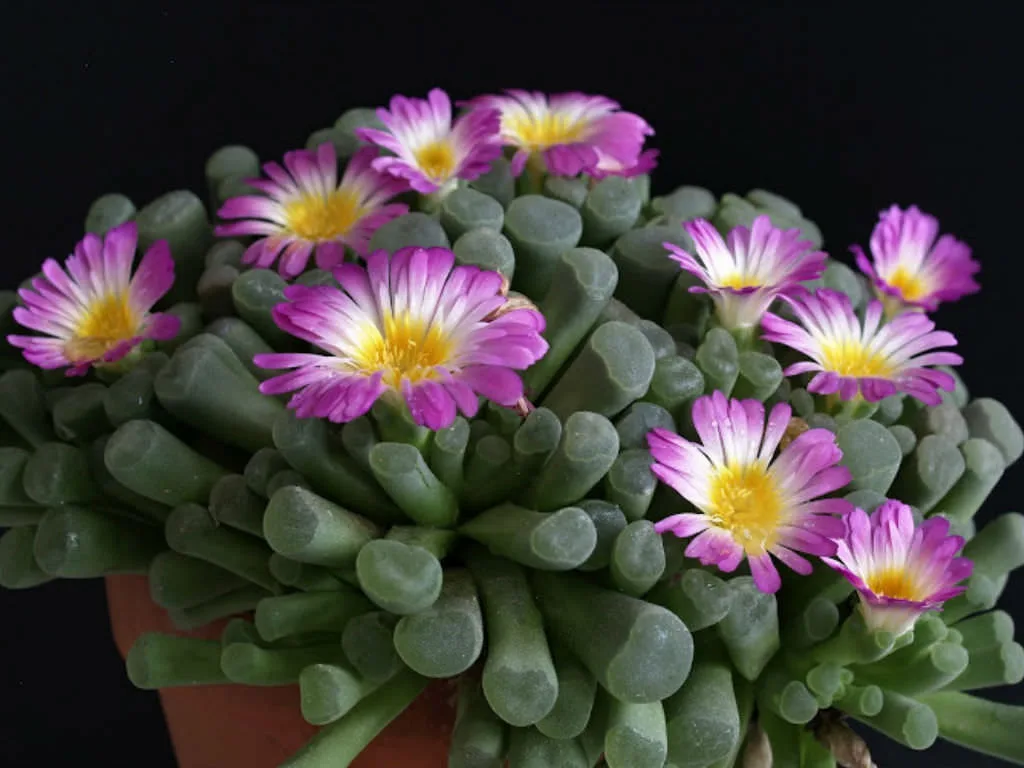
Characteristics and Appearance:
- Transparent Leaves: Features translucent leaves, creating a unique “window” effect.
- Delicate Flowers: Produces small, delicate flowers, adding a charming touch.
- Compact Growth: Tends to form compact clusters, ideal for small spaces.
Specific Care:
- Adequate Light: Prefer bright indirect light; partial shade is also well tolerated.
- Moderate Watering: Avoid overwatering; water when the soil is dry on the surface.
- Well-drained soil: Use a specific substrate for succulents to ensure good drainage.
- Frost Protection: Sensitive to cold; protect against very low temperatures.
By incorporating Frithia Pulchra into your succulent collection, you add a unique and charming touch, enjoying the satisfaction of growing one of the rarest species in the succulent world.
Why are they Rare?
The rarity of the succulents mentioned, such as Haworthia Cooperi Var. Truncata, Lithops Weberi, Pachypodium Horombense, Adromischus Cristatus and Frithia Pulchra, can be attributed to several factors:
- Specific Habitats: Many of these succulents are endemic to restricted geographical regions, making them vulnerable to habitat loss.
- Slow Growth: The slow growth of these plants contributes to the difficulty in reproducing them on a large scale, making them naturally scarcer.
- Unique Adaptations: Their specific adaptations to extreme environments make it difficult for them to reproduce in conditions outside their natural habitat.
- Exploitationand Collection: The search for rare succulents for personal collections can lead to overexploitation and the depletion of wild populations.
Raising awareness about the importance of preserving these species is fundamental. Adopting sustainable cultivation practices and avoiding indiscriminate collection contributes to maintaining diversity and preserving rare succulents in their natural environment.
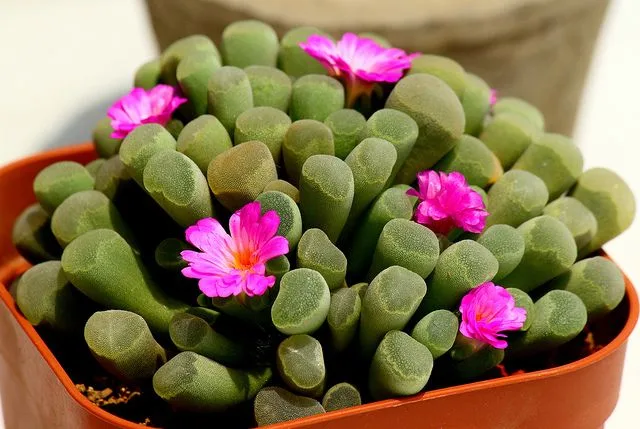
Conclusion
By exploring the unique characteristics of the five rarest succulents in the world – Haworthia Cooperi Var. Truncata, Lithops Weberi, Pachypodium Horombense, Adromischus Cristatus and Frithia Pulchra – it is clear that these plants represent true wonders of nature.
In addition to their unique beauty, the rarity of these succulents highlights the importance of environmental conservation. Preserving their natural habitats and adopting responsible cultivation practices are essential steps to ensure that future generations can also admire and appreciate these botanical gems. Through care and awareness, we can ensure a vibrant future for these extraordinary plants.
Frequently Asked Questions
What is the most popular succulent?
Most Popular Succulent: The most popular succulent can vary over time and according to trends, but some varieties, such as Echeveria ‘Raindrops’ or Variegated String of Pearls, often attract great interest among succulent enthusiasts due to their unique beauty and characteristics.
What is the most expensive succulent in the world?
Most Expensive Succulent in the World: Identifying the most expensive succulent in the world can depend on several factors, including rarity, growing conditions and market demand. Exclusive varieties, such as the Variegated Monstera, have been known to fetch high prices in transactions between collectors and rare plant enthusiasts.
What is the rarest succulent?
Rarest Succulent: Determining the rarest succulent can be subjective, but some species, such as Haworthia cooperi var. truncata or Lithops weberi, are considered rare due to their limited distribution, unique characteristics and, in some cases, difficulty in cultivation.


